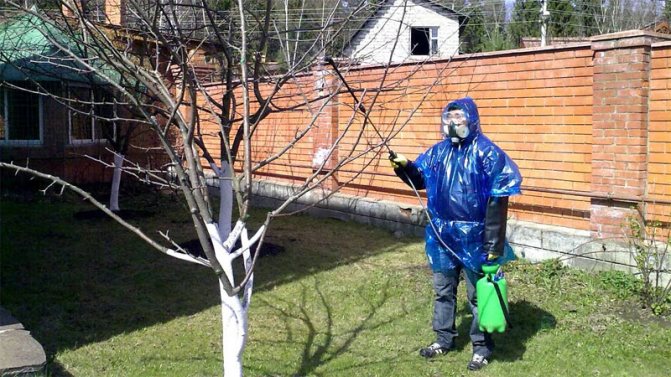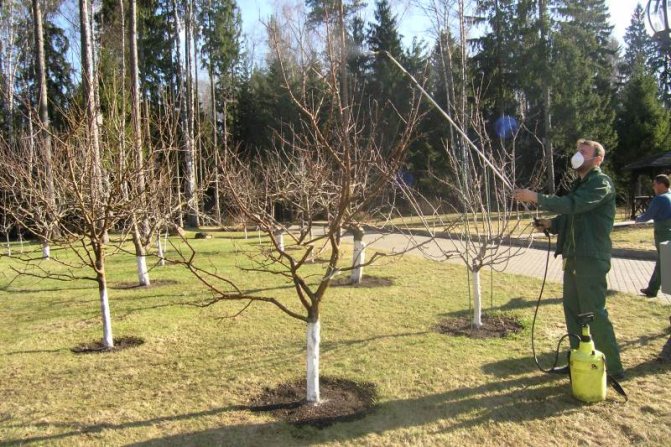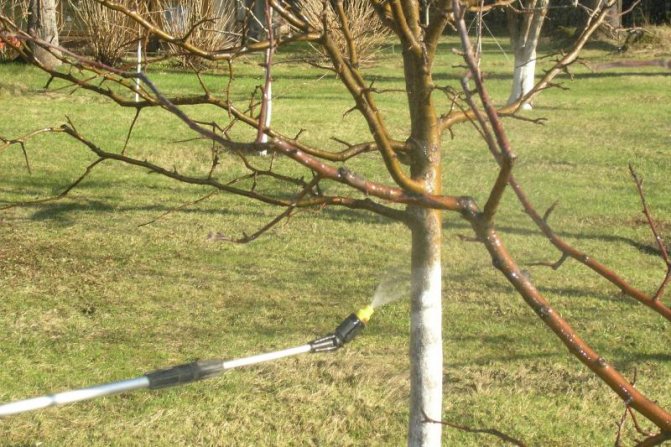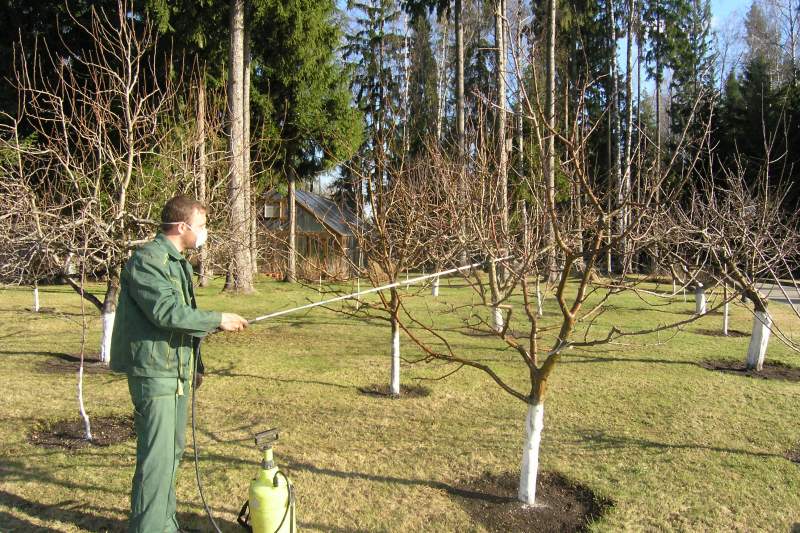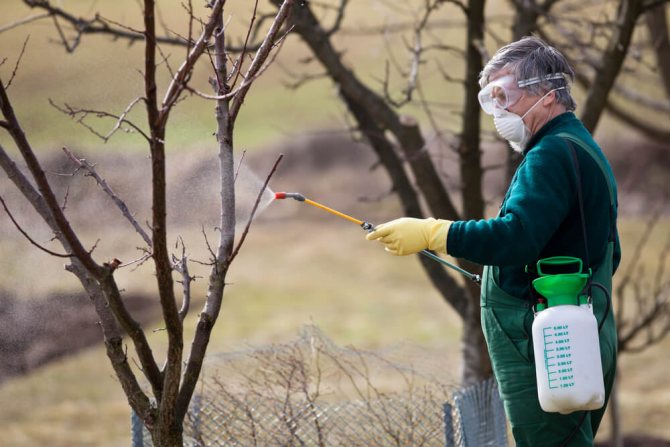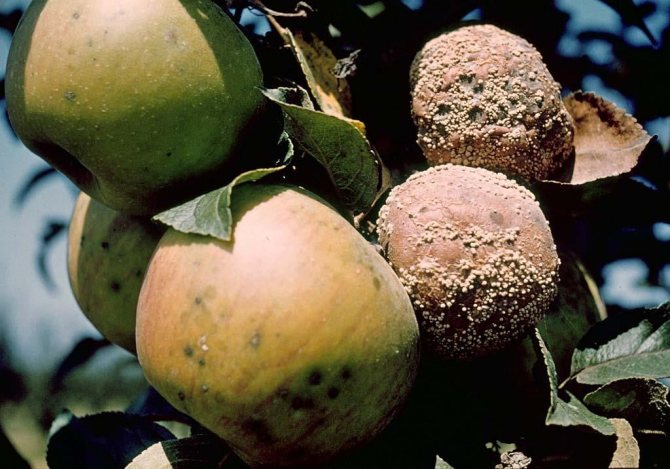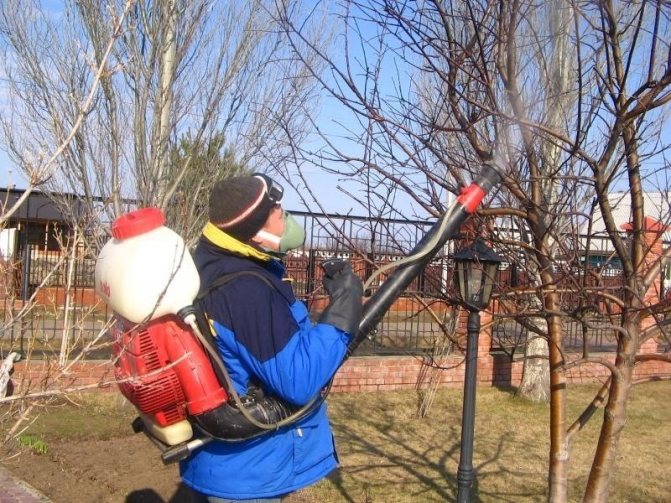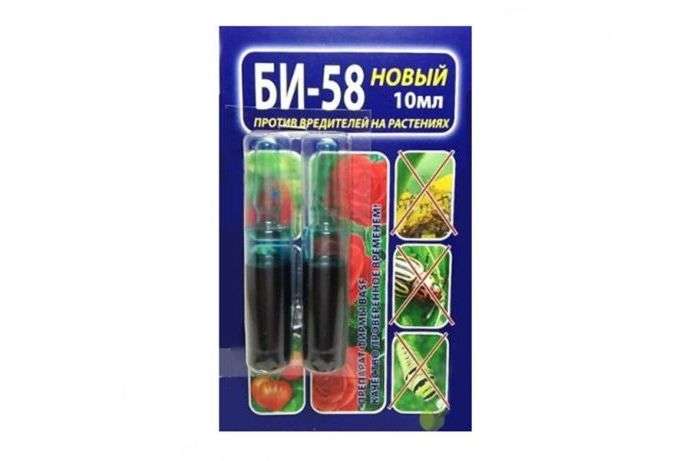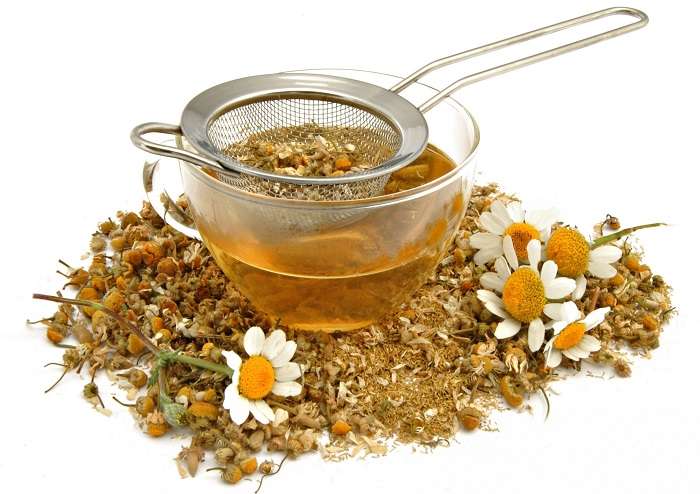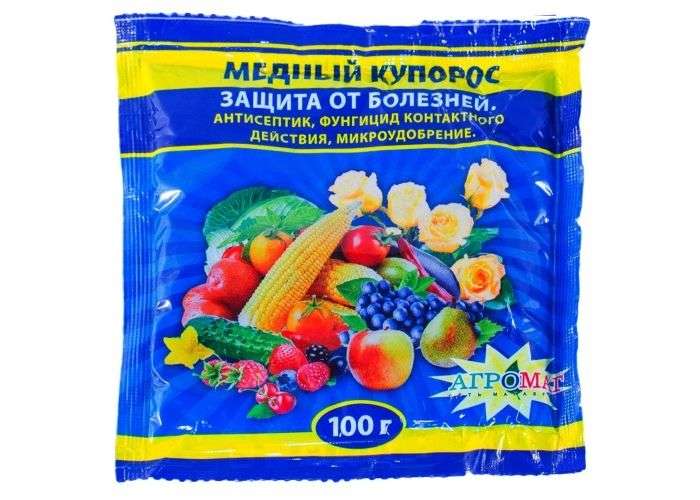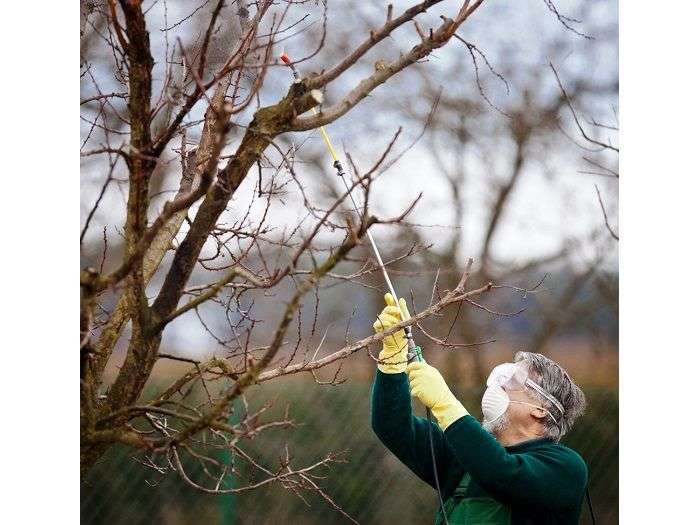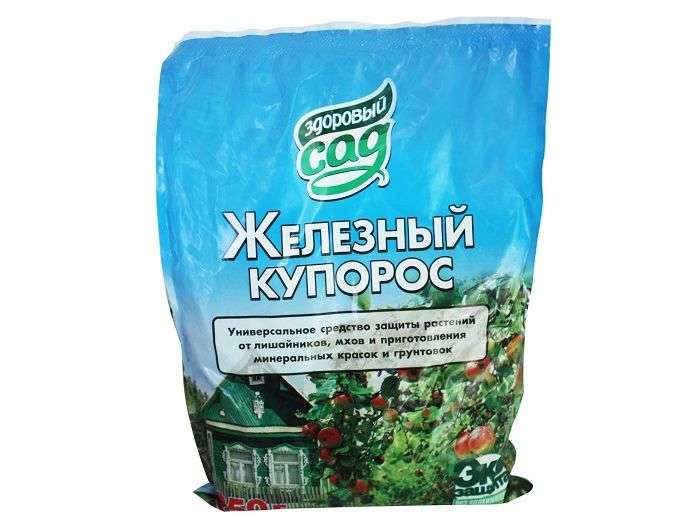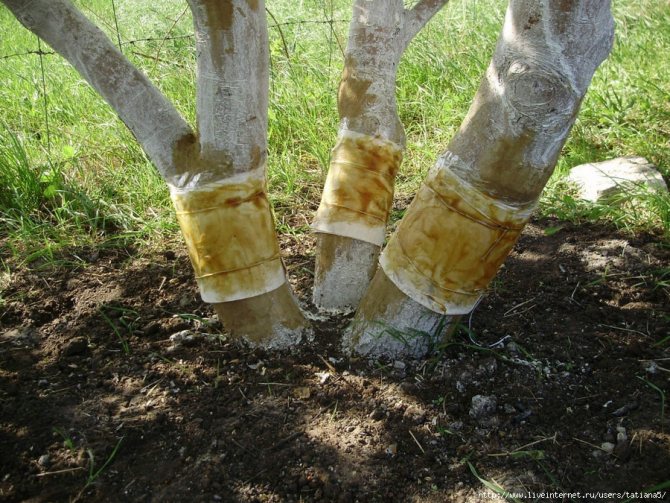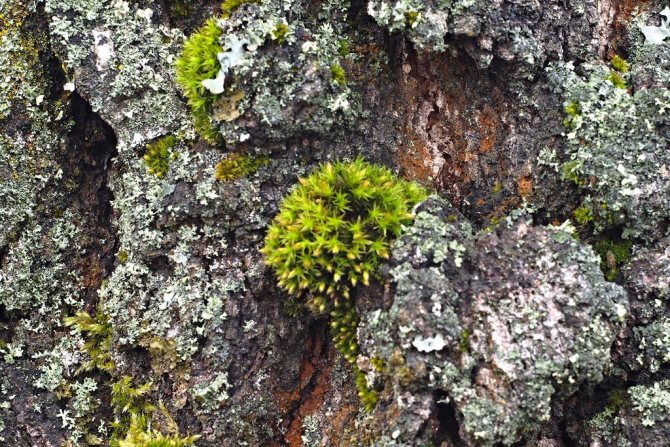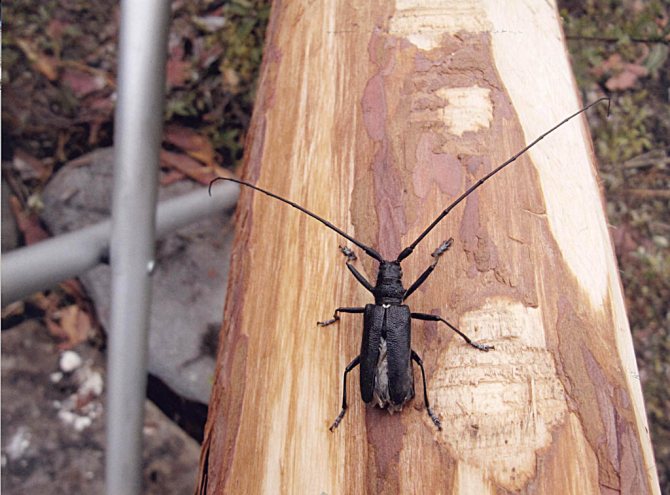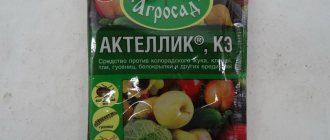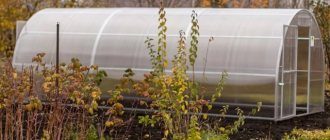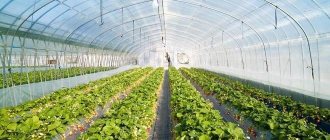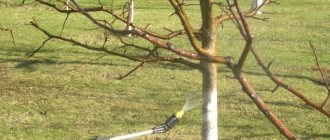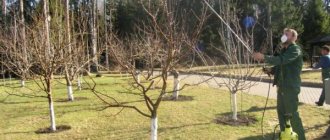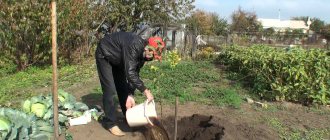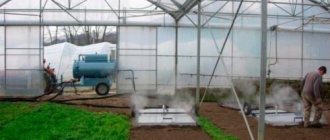Experienced gardeners know very well that it is from the moment the tree awakens in spring that the difficult path to harvesting a rich apple harvest begins. And the most important, repeatedly repeated stage of this path is the correct protective treatment of the apple tree. After all, it is impossible to grow a crop without carrying out a protective treatment of the garden from pests that regularly attack trees. And there are quite a few of them, and the apple tree for many of them is their home.
Many of them are not just not averse to feasting not only on growing fruits, but also on the apple tree itself very willingly, sometimes causing the death of the tree. Even with the observance of all the rules of care (timely pruning, fertilizing, watering), the risk of parasitic infection remains very high. Therefore, it is necessary to take this spring event to protect your apple trees with all responsibility.
Next, we will find out when (in what time frame) and with what (with what drugs) apple trees should be sprayed in the spring against diseases and pests.
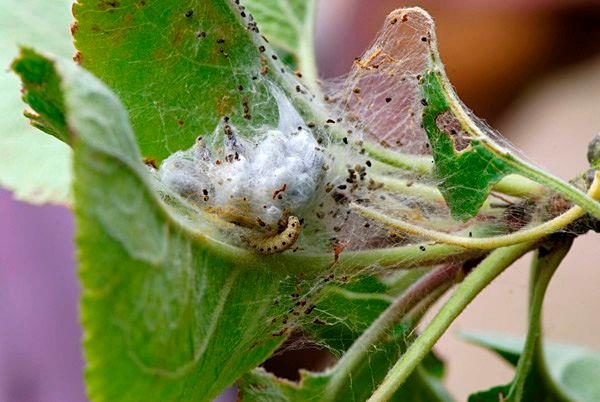
Indications for apple processing
The apple tree is supposed to be prophylactically treated in accordance with the gardener's calendar. In the spring, up to 15 procedures are carried out against diseases and pests. If symptoms of a specific disease or pest appear on the tree, treatment should be carried out immediately.
The concentration of drugs and the frequency of treatments depends on the climatic zone. In the southern regions, where there is a lot of biological activity, trees need to be processed more often and stronger solutions should be made.
Pests and pathogens of different origins adapt to certain drugs. Therefore, from processing to processing, they should be changed to others.
The processing of apple trees from scab is carried out as necessary with mandatory repetition.


The apple tree should be processed for prevention
When dealing with a certain pest, you should study the symptoms of its appearance, food preferences. strengths and weaknesses, resistance to certain means.
Biologically active means of protection
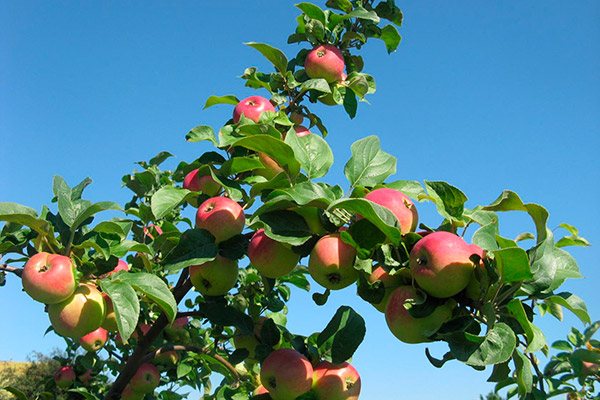

- Planriz is a universal remedy, as it simultaneously affects harmful insects and pathogens. Some types of soil bacteria act as rescuers of apple trees.
- Pentafag-S is indispensable for treating apple trees against bacterial cancer. It can also be used for preventive purposes.
- Bitoxibacillio paralyzes the digestive tract of harmful insects, from which they soon die.
- Aktofit successfully destroys aphids and ticks, affecting their nervous system.
- Lepidocide contains live bacteria of soil beneficial microorganisms. The drug has a paralyzing effect on the digestive system of insects. It is most successfully used against the moth and leafworm.
- A mixture of biologically active drugs. Experienced gardeners advise using a mixture of several types of biologically active preparations for spraying apple trees. To do this, they dissolve 100 ml of bitoxybacillin in 10 liters of water, the same amount of lepidocide and 60 ml of actofit. This solution can be used if the ambient temperature is above 10 degrees. If the weather is cooler, the solution will not work.
Stages and rules of treatment for diseases
The stages and rules of processing for different climatic zones are similar, they are tied to the stages of the plant's annual cycle.
Spring preventive treatment of apple trees is divided into three stages:
The air temperature during the day becomes positive, but the tree has not yet emerged from hibernation. Spring pruning is carried out, removal of old bark along with overwintered pests. Next, the apple tree is sprayed with fungicides, at this stage you can give the maximum dosage of the active substance. The stage is completed by whitewashing with lime with the addition of copper sulfate or paint for garden trees. In the middle lane, the stage falls in mid-March.
- Swelling of the kidneys. The main threat at this time is the flower beetle. Contact insecticides of a wide spectrum of action are used against it. The concentration should be moderate, otherwise you can burn the kidneys.
- The third stage is carried out after flowering. Insecticides are used that are specialized against leaf eaters. It is unacceptable to skip it. otherwise, you can lose most of the foliage and slow down the growth of the fruit.
Gardening experts have formulated a number of processing rules:
- you need to spray in clear weather at temperatures above + 5 ° C;
- the sprayer must be in good working order and create a uniform concentrated cloud of fine suspension;
- after flowering, chemicals cannot be used, pests will have to be collected or shaken off by hand;
- the use of fungicides is permissible until the beginning of fruit ripening.
To get a good harvest, you have to work hard. Timelines are important. order and processing rules.
Preparations for spraying apple trees
| Means | Against what | Application method and dosage | Protection term. days | Waiting period, days | Application |
| Potent insectofungicides | |||||
| DNOC | universal | 50g / 10L | 20-30 | – | Once every 2-3 years, before budding or after shedding foliage |
| Nitrafen | 200g / 10L | 1-2 times a year, before budding or after shedding foliage | |||
| Copper sulfate | 300g / 10L | ||||
| Bordeaux liquid | |||||
| Urea (urea) | 60g / l | ||||
| Ammonium nitrate | |||||
| Fungicides | |||||
| Fitosporin | Fungus | 5g / 10 l | 10-14 | 0 | Unlimited |
| Insecticides | |||||
| Confidor | Sucking and gnawing insects | 1g / 10L | 15-20 | 1-2 | |
| Callipso | Leafworms, flower beetles, moths, scale insects | 2ml / 10L | 2 | ||
| Inta-Vir | Ants | 100 g per 500 m 2 | 7-12 | – | N / a |
| Protective equipment | |||||
| Var, ready-made compositions | Protection of cuts, wounds | – | – | After trimming | |
| Lime | Protection of the bark from burns, insects | Until the state of sour cream | In spring and autumn | ||
| Antibiotics | |||||
| Ampicillin | microorganisms | 1 amp / 10l | N / a | N / a | Of necessity |
| Fitolavin | 20ml / 10L | 50 | Not more than 14 days | ||
| Ofloxacin | 2 tablets / 10l | Before and after flowering | |||
| Phytohormones | |||||
| Epin | viruses | 2 amp / 10l | – | – | Before flowering, after collecting hearths. |
| Zircon | 40 drops / l | – | – | Not more than 14 days | |
| Folk remedies | |||||
| Salt | Scab, insects | 1 kg / 10L | 20 | – | Before the start of the growing season |
| Diesel fuel | Bark beetles and other insects | – | before the appearance of the kidneys | ||
| Tar soap | Aphid | 60g / 10L | – | Once after flowering | |
Top dressing of apple trees in autumn
Here the opinions of gardeners differ. Someone thinks that it is completely pointless to do this in autumn. Other avid gardeners claim that fertilizing will help the apple tree survive in winter. In any case, fertilizers will not damage the fruit tree. This process takes little time. It is necessary to add 5-6 kg of humus per m² of soil. Compost can be used instead. As a fertilizer, you can use 100 g of superphosphate and the same amount of potassium chloride, wood ash, urea. They are added to the soil during watering.
You can simplify the work by adding fertilizer while digging the ground.
Recommendation! Fertilizers containing nitrogen cannot be used in the fall. They worsen the frost resistance of trees.
Means and methods of processing apple trees for diseases
For various diseases and pests. affecting fruit crops, appropriate methods of prevention and treatment have been developed.
Moniliosis treatment
This common tree disease is caused by spores of a harmful fungus carried by bees and other insects that pollinate the flower heads. Branches and foliage look burnt. The diseased elements of the tree are removed and burned. The tree and its neighbors are sprayed with potent antifungal compounds, such as:
- Horus;
- Topsin;
- Abiga Peak.
To reduce the risk of disease, it is better to carry out preventive treatment of the garden in three stages:
- before flowering;
- after flowering;
- 14 days after the second stage.
Fungus treatment
If untreated cuts or broken branches are left on the apple tree, mold can penetrate into them. Hollows may form at the site of the lesion.
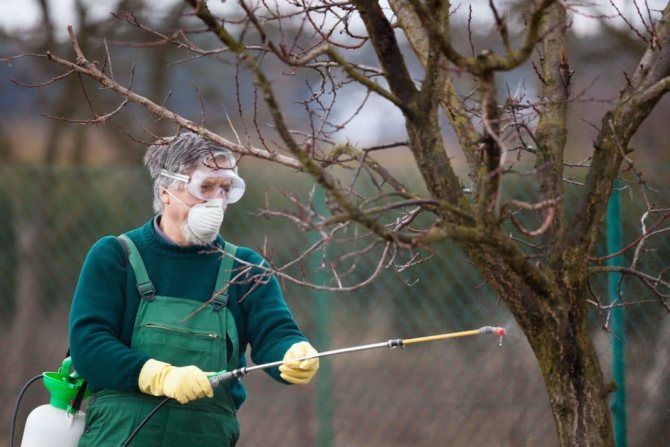

Treatment of apple trees from fungus
Damaged areas are cleaned until a healthy layer of wood appears. They are processed with 2% copper sulfate.
Treated places are covered with garden varnish or a special compound.
Fighting Fruit Rot
If it was not possible to cope with moniliosis by treating apple trees in the spring, the disease affects the fruits. The disease is called gray or fruit rot.
All rotten and darkened fruits should be collected and burned. The tree is treated with a potent fungicide. It is important to have time with processing 30-35 days before the planned harvest date. If there is less time left. will have to limit ourselves to the biological product Fitosporin. It is applied twice with an interval of 14 days.
It is important to distinguish between gray rot and rotting of fruit affected by insects. In this case, the rotten place is colored brown and is located on one side of the fruit.
Bacterial and viral diseases
The so-called fire blight affects the tissues of the apple tree. It is caused by the microorganism Erwinia amylovora. Microbes enter tissues through various injuries, and also often accompanies moniliosis.
Insects carry the disease; broad-spectrum antibiotics are used to combat it.
Sucking insects also carry viral diseases:
- mosaic;
- witch's broom;
- stellate cracking of apples, etc.
Getting into the tubules of tree tissue through leaks and damage, viruses lead to the degeneration of tissues into malignant formations. An effective treatment for viral diseases has not yet been found, it remains only to destroy the affected fruits and parts of the tree. As a preventive measure, phytohormones that activate the immune system of the apple tree are used.
If there are aphids and ants on the tree
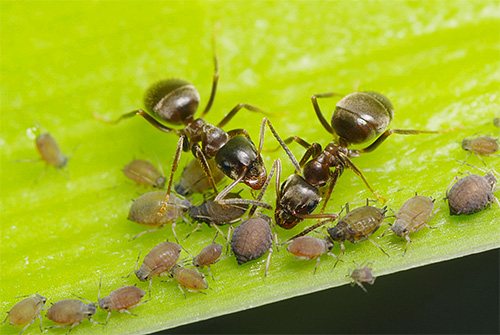

Experienced gardeners know that these insects are inseparable. You do not need to look for aphids, but if there are ants, and they feed on the sweet secretions of aphids, then it is necessary to start processing.
Wintering forms of aphids wake up with the opening of the buds, so there is no point in waiting for an attack, it is better to immediately carry out the treatment.
For this purpose, you can use drugs:
- "Kalash from aphids" 5 ml per bucket of water. Not washed off by rain, not addictive to insects;
- If the aphid is already "wielding" we will use "Accord", it also works as a repellent;
- "Tanker" 3 ml per bucket of water, one treatment is enough;
- Fitoverm;
- Aktara.
Any of these drugs are effective, especially when alternated.
How and how to treat an apple tree from pests
Pests and means of controlling them are divided into three groups: insects, mites and rodents. The processing of apple trees from garden pests is carried out taking into account their number and species characteristics. In the spring, pest control is mandatory.
Insects
Prophylactic treatment of apple trees is carried out with urea on a regular basis. To kill harmful insects, insecticidal preparations are used.
Fruit moth. Apples are eaten by moth caterpillars, they are formed from eggs that the butterfly lays on leaves and inflorescences. At this point, they are vulnerable to insecticidal drugs. You need to process it after the end of flowering and twice with an interval of 10-12 days.After the caterpillars hit the fruits, they can only be dealt with mechanically.
- Color beetle. The weevil beetle is able to overwinter in soil and fallen leaves. It crawls up the trunk and lays eggs in the kidneys. The hatched larva eats the bud, and the flower does not bloom. The same insecticidal preparations are used as against the moth.
- Aphid. It is carried onto the tree by ants and eats the leaves. The Inta-vir remedy is used against them. It also suppresses the development of aphids carried on the leaves. Inta-vir copes with insects in the garden in 7-12 days.
- Leaf roll. Butterflies lay their eggs on the leaves in May. Caterpillars hatching from eggs eat the leaves, which is why they curl up into lumps. Get rid of the leaf rollers by periodically applying an insecticide solution.
- Bark beetle. The small bug is able to fly. It gnaws long, winding passages under the bark, disrupting the circulation of the life's juices of the apple tree. In the passages, larvae hatch from the eggs, which continue to gnaw the lower bast layers of the bark. With careful observation of the trees, you can have time to find small holes through which bugs have penetrated under the bark. The garden is sprayed with insecticides at the end of flowering. There is also a popular method - processing wood with an emulsion of water and diesel fuel in equal proportions with the addition of a 2% solution of copper sulfate. The fuel has a high penetrating power and blocks access to air for bugs and larvae in their passages. From this, insects die without having time to inflict fatal damage. With a developed defeat of the apple tree by the bark beetle, it is necessary to use the method of applying the solution using a garden syringe. We'll have to find all the holes and sprinkle each one until the liquid starts to flow back.


Leafworm on apple tree
Mites
Apple orchards are often affected by spider mites. They crawl to the underside of the leaf and drink the juice. The eaten-up sheets are folded and braided with a spider's thread. If the cobweb is found not between the branches, but directly on the leaves, this is evidence of the presence of a spider mite.
Versatile acaricidal-insecticidal drugs such as Fufanon or Actellik are effective against these pests. They are applied until the buds swell, while the mites slowly crawl up the trunk. The treatment is repeated twice with an interval of a week so as to be in time before and after flowering. At the same time, protection is carried out against other insect pests. If you find leaves that are infected with a tick and braided with cobwebs, you have to manually cut them and burn them. Treatment with acaricides is also carried out three times. It is important to complete it before the ovary is formed.
Rodents
Common mice pose a serious threat to apple trees and other fruit trees. Several mice are capable of gnawing on a circular strip of bark and interrupting the circulation of the life juices of the apple tree. this can lead to the death of the entire tree.
In the past, to protect against rodents gnawing young bark, they used a winding on the trunk of canvas or sackcloth soaked in a solution to repel mice.
Today, plastic bottles of 2 or 6 liters are used for this. They are cut lengthwise, put on the trunk and fastened with tape. They do this in such a way as to cover the trunk to a height of 50-70 cm. Rodents are not able to climb over smooth plastic and cannot damage the tree. Labels should be removed from bottles that make it easier for rodents to get through.
The areas of the bark found gnawed by mice need to be treated with a protective compound. If the area of damage is significant, it will be necessary to apply medical dressings to help the tree restore the missing areas.
Nuances of removing moss and lichen
On old fruit trees. especially those growing in a shaded part of the garden or having a dense, well-developed crown, mosses or lichens can grow. The lichens themselves do not harm the tree. However, they can become a breeding ground for pests, fungi or molds.From the lichen site, the defeat can spread to the entire apple tree. To reduce the risk of such diseases, before spring pruning, before the buds swell, mechanically, with scrapers and hard brushes, remove all detected colonies of moss or lichen, especially those nesting in places of old cuts or break-off. In them, the density of the protective bark is reduced and the penetration of pests and fungi into the tissue of the tree is facilitated.
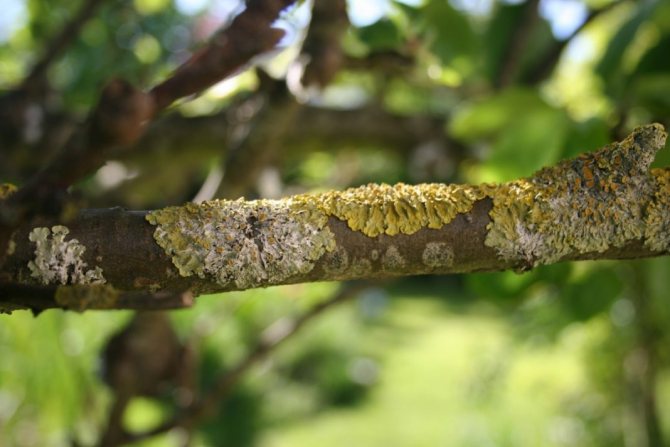

Moss on the apple tree must be removed
Moss removal can be carried out in the fall, after the tree has dropped its foliage and the main life processes have stopped until spring.
During processing, care should be taken not to damage the bark. If, nevertheless, a trouble happened, such places need to be treated as soon as possible with garden varnish or a special composition.

